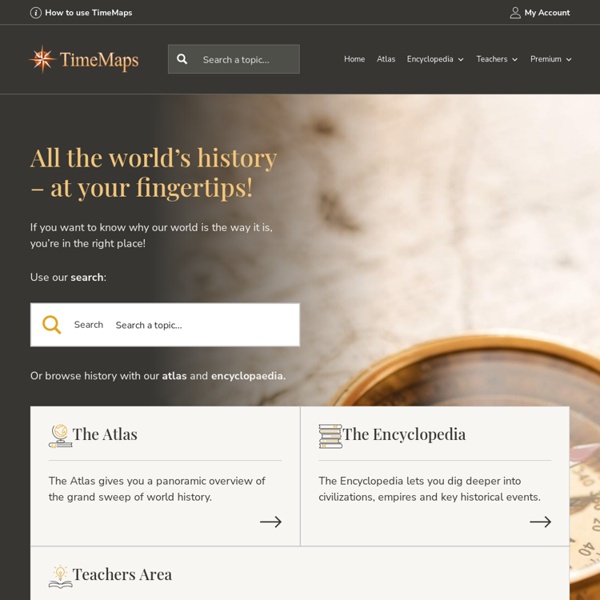List of timelines
From Wikipedia, the free encyclopedia This is a list of timelines currently on Wikipedia. §Types[edit]
Historypin
Great, you've started a collection - now it needs some pins. Great, you've created a tour - now it needs some pins. You can choose from exisiting pins on Historypin. When you see a pin you like, click the repin button: To find pins, browse Historypin or choose them from your own profile. If you want to upload brand new pins, go for it.
Global inequalities in population, wealth, and religious origin shown in six maps.
This map of Canada shows the country's familiar vastness. A single line drawn across its deep south adds a surprising layer of information. The line runs well below the 49th parallel that constitutes that long straight stretch of U.S.
Olaus Magnus’ Carta Marina: Sea monsters on a gorgeous Renaissance map
The first time one looks at a color print of Olaus Magnus’ 1539 Carta Marina, the eyes scan the crowded landmass and fix on the creatures in the western part of the map. Larger than the other images and framed by open space, they dominate the chart visually and stir the imagination. To us, the quaint figures rising in the northern waters of Olaus’ map of Scandinavia could be illustrations in a children’s book. However, given that maps chart human knowledge, that they provide glimpses of our understanding of the world at any point in time, Olaus’ 16th-century contemporaries would have regarded the Carta Marina sea monsters differently than we do. Click a monster to learn more.
Life in Old Babylonia: The Importance of Trade
Activity 1. How Do We Know the Babylonians Traded? In this activity, students refer to a natural resource map of the region to learn the source of materials for Old Babylonian artifacts reviewed online. Mesopotamia, a hot, dry region subject to floods, became fertile enough to produce a surplus of grain thanks largely to a system of canals first built perhaps a thousand years before the Old Babylonian period. In this way, agricultural products became available for trade.
English Timeline
This interactive timeline allows you to explore the evolution of English language and literature, from the 11th century to the present day. Scroll through decade by decade to investigate the richness and diversity of our poetry and prose, as well as the many social, cultural and political strands from which our language has been woven. The timeline includes a fascinating combination of texts: Anglo Saxon tales and medieval illuminations; iconic literary manuscripts and printed texts; as well as letters, newspapers, handbills, posters, charters, speeches and campaign leaflets.
Interactive timelines: Comparing the reigns of Victoria and Elizabeth
We've sent an email with instructions to create a new password. Your existing password has not been changed. We'll send you a link to create a new password. {* #forgotPasswordForm *} {* traditionalSignIn_emailAddress *}
If the World were 100 PEOPLE
50 would be female 50 would be male 26 would be children There would be 74 adults, 8 of whom would be 65 and olderThere would be: 60 Asians 15 Africans 14 people from the Americas 11 Europeans33 Christians 22 Muslims 14 Hindus 7 Buddhists 12 people who practice other religions 12 people who would not be aligned with a religion12 would speak Chinese 5 would speak Spanish 5 would speak English 3 would speak Arabic 3 would speak Hindi 3 would speak Bengali 3 would speak Portuguese 2 would speak Russian 2 would speak Japanese 62 would speak other languages83 would be able to read and write; 17 would not 7 would have a college degree 22 would own or share a computer77 people would have a place to shelter themfrom the wind and the rain, but 23 would not 1 would be dying of starvation 15 would be undernourished 21 would be overweight 87 would have access to safe drinking water 13 people would have no clean, safe water to drink
The Lost Treasure Chest
Historical Warrior Illustration Series Part XXIV Pavel Ryzhenko Pavel Ryzhenko is a Russian artist (born in 1970) and professor at the Russian Fine Arts Academy. He specializes in historical & religious paintings. While his paintings may not be historically accurate, but rather give an idea of … Continue reading
Egypt's Pyramids: Monuments with a Message
Activity 1. Messages in Stone Now that the students know where the pyramids are and how big they are, ask them what these great structures tell us about the ancient Egyptians by observing and analyzing the following tomb artifacts from University of Memphis Museum



